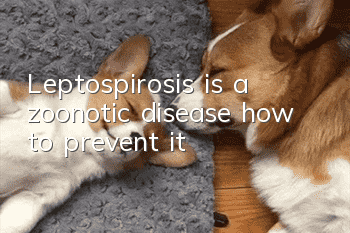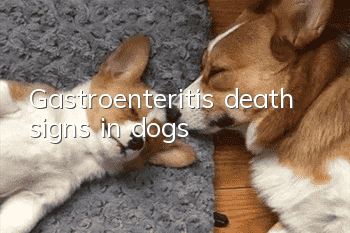Leptospirosis is a zoonotic disease, how to prevent it?

Zoonotic diseases refer to diseases and infectious diseases that are naturally transmitted between humans and livestock and poultry raised by humans. Leptospira canis is a zoonotic infectious disease.
Leptospirosis in dogs
This disease is caused by Leptospira canis or Leptospira hemorrhagic jaundice. Dogs of all ages are susceptible to infection. Male dogs and puppies have a higher incidence and mortality rate. Clinically, nephritis and hemorrhagic jaundice are the main features. This disease can be confirmed through clinical diagnosis, routine blood testing and pathogenic examination. Once discovered, it should be treated in time. Feeding and management should be strengthened, environmental sanitation and disinfection should be paid attention to, sources of infection should be cut off, and immune preventive measures should be strengthened.
Channels and methods of communication
Various bacteria-carrying animals excrete leptospira from urine, milk, saliva and semen. Among them, the amount of bacteria excreted in urine is large and the bacteria excreted for a long time pollutes the external environment. Leptospira can survive for a long time in water or moist soil in the external environment and can even reproduce. People can become infected with leptospirosis through direct or indirect contact.
Clinical symptoms
Dogs of all ages can be infected. The incidence rate is higher in male dogs than in female dogs. The incubation period is 5-15 days.
Acute cases can occur suddenly, with body weakness, inability to eat, vomiting, elevated body temperature (39.5-40°C), depression, hindquarter muscle stiffness and pain, reluctance to stand up and walk, difficulty breathing, and varying degrees of jaundice on the visible mucous membranes. or bleeding. Generally, the body fails and the body temperature drops and death occurs within 2 days.
Subacute symptoms are characterized by fever, vomiting, anorexia, dehydration, jaundice, and mucosal necrosis. Irregular bleeding spots and jaundice can be seen on the oral mucosa of sick dogs; symptoms of conjunctivitis can be seen in the eyes. Mucous discharge can be seen in the corners of the eyes. Coughing, wheezing and difficulty breathing can also be seen. Affected dogs sometimes show symptoms such as irritability, thirst, and polyuria. Dogs with subacute infection recover after about 2-3 weeks.
Chronic symptoms often come back as acute or subacute symptoms. It often appears as chronic liver, kidney and gastrointestinal symptoms, and most of them can be recovered through symptomatic treatment. A few died of uremia, cirrhosis, ascites, and body failure.
Principles of treatment
The treatment principles are antibacterial and anti-inflammatory, supplementing physical energy, protecting the liver and strengthening the heart, stopping bleeding and vomiting, and correcting acidosis. ① Antibacterial and anti-inflammatory: Mix 5% glucose, cefradine and dexamethasone and infuse intravenously. ② Supplement physical energy and protect liver: Use 5% glucose, vitamin B complex, coenzyme A, ATP, and muscle liver for intravenous injection. ③ Stop bleeding and stop vomiting: Use 5% glucose, gentamicin, VB, 654-2 mixed intravenously and subcutaneously to stop bleeding. ④ Correct acidosis and adjust electrolyte balance: shrinkMix glucose injection and NaHCO for intravenous injection. ⑤ Inject Painlidine subcutaneously to achieve analgesic effect. To treat oral ulcers, you can use 1% potassium permanganate solution to clean the mouth 2 to 3 times. If oliguria and frequent urination occur, use 10% glucose and add furosemide injection for mixed injection.
Preventive measures
① Once the disease occurs, the sick dog should be isolated immediately and the dead dog and the contaminated feed and excrement should be buried deeply. Thoroughly disinfect the kennels and activity venues,
② Immunization prevention: Puppies should be vaccinated against Leptospira starting at 2 months of age, with the second dose at 11 to 12 weeks of age, the third dose at 14 to 15 weeks of age, and once a year thereafter. Vaccination of personnel who are in frequent contact with susceptible animals.
Summary of medical guidance
Leptospira is a zoonotic infectious disease. For the health of you and your dog, vaccination is the best and most effective way to prevent this disease.
- How to treat fungal dermatitis in dogs
- Common causes and treatments for dog diarrhea (diarrhea)
- Why is the puppy not active?
- Symptoms of rickets in dogs
- Causes of Calcium Deficiency in Dogs
- Dog colds should not be underestimated, what should we do?
- What is canine stomatitis? What are the causes of canine stomatitis in dogs?
- Causes of prostatic hypertrophy in dogs | Diagnosis | Prevention and treatment methods
- How to prevent and treat eczema in dogs?
- What should I do if my Corgi vomits after eating too much?



